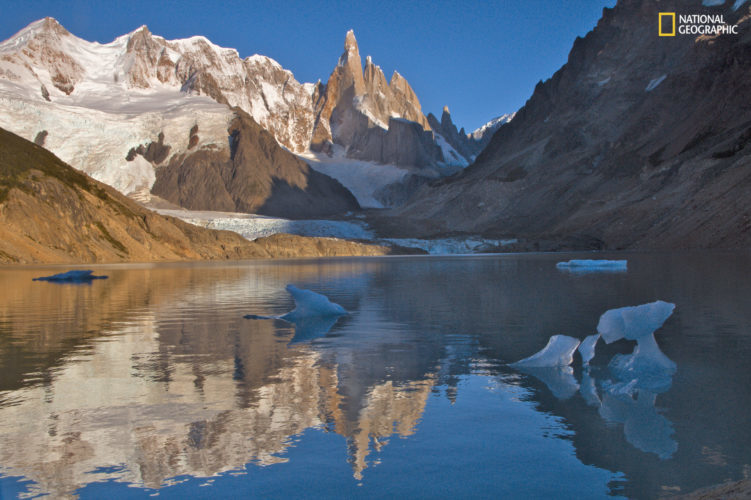Vital mountain water supplies threatened by climate change

Earth’s naturally occurring water systems are under threat because of climate change and growing demand putting the water supply of billions at risk, new international research has found.
The study, authored by 32 scientists from around the world, assessed the planet’s 78 mountain glacier-based water systems and, for the first time, ranked them in order of importance to adjacent lowland communities, as well as their vulnerability to future environmental and socioeconomic changes.
These systems, known as mountain water towers, store and transport water via glaciers, snow packs, lakes and streams, thereby supplying invaluable water resources to 1.9 billion people globally – roughly a quarter of the world’s population.
The research, published in Nature, provides evidence that global water towers are at risk, in many cases critically, due to the threats of climate change, growing populations, mismanagement of water resources, and other geopolitical factors.
Further, the authors conclude that it is essential to develop international, mountain-specific conservation and climate change adaptation policies and strategies to safeguard both ecosystems and people downstream.
Dr Tobias Bolch of the School of Geography and Sustainable Development at the University of St Andrews contributed to the study as an expert in the changing mountain cryosphere and its impact on the downstream society.
He said: “The study quantified for the first time both the natural water supply from the mountains as well as the water demand by society, and also provided projections for the future based on climatic and socioeconomic scenarios.
“The projected loss of ice and snow and increasing water needs makes specific densely-populated basins located in arid regions, like the Indus basin in South Asia or the Amu Darya basin in Central Asia, highly vulnerable in the future.”
Globally, the most relied-upon mountain system is the Indus water tower in Asia, according to the research. The Indus water tower, which is made up of vast areas of the Himalayan mountain range and covers portions of Afghanistan, China, India and Pakistan, is also one of the most vulnerable. High-ranking water tower systems on other continents are the southern Andes, the Rocky Mountains and the European Alps.
To determine the importance of these 78 water towers, researchers analysed the various factors that determine how reliant downstream communities are upon the supplies of water from these systems.
They also assessed each water tower to determine the vulnerability of the water resources, as well as the people and ecosystems that depend on them, based on predictions of future climate and socioeconomic changes.
Of the 78 global water towers identified, the following are the five most relied-upon systems by continent:
- Asia: Indus, Tarim, Amu Darya, Syr Darya, Ganges-Brahmaputra
- Europe: Rhône, Po, Rhine, Black Sea North Coast, Caspian Sea Coast
- North America: Fraser, Columbia and Northwest United States, Pacific and Arctic Coast, Saskatchewan-Nelson, North America-Colorado
- South America: South Chile, South Argentina, Negro, La Puna region, North Chile
The study was led by Professor Walter Immerzeel and Dr Arthur Lutz of Utrecht University, experienced researchers of water and climate change in high mountainous Asia.
Professor Immerzeel said: “What is unique about our study is that we have assessed the water towers’ importance, not only by looking at how much water they store and provide, but also how much mountain water is needed downstream and how vulnerable these systems and communities are to a number of likely changes in the next few decades.”
Dr Lutz added: “By assessing all glacial water towers on Earth, we identified the key basin that should be on top of regional and global political agendas.”
This research was supported by National Geographic and Rolex as part of their Perpetual Planet partnership, which aims to shine a light on the challenges facing the Earth’s critical life-support systems, support science and exploration of these systems, and empower leaders around the world to develop solutions to protect the planet.
Jonathan Baillie, Executive Vice-President and Chief Scientist at the National Geographic Society, said: “Mountains are iconic and sacred places around the world, but the critical role they play in sustaining life on Earth is not well understood.
“This research will help decision-makers, on global and local levels, prioritise where action should be taken to protect mountain systems, the resources they provide, and the people who depend on them.”
To explore the data and compare water tower rankings, visit Perpetual Planet.
Image caption: Glaciers covering the Adela and Cerro Torre massifs are reflected in the Laguna Torre, a glacial lake in Los Glacieres National Park. The South Chile water tower is the most at-risk water tower in South America due to high reliance on its water resources and increasing threats to its water supply, according to new research supported by National Geographic and Rolex’s Perpetual Planet partnership. Learn more at Perpetual Planet. Photo by Beth Wald, National Geographic.
The paper, 'Importance and vulnerability of the world's water towers', by WW Immerzeel, AF Lutz, M Andrade, A Bahl, H Biemans, T Bolch, S Hyde, S Brumby, BJ Davies, AC Elmore, A Emmer, M Feng, A Fernández, U Haritashya, JS Kargel, M Koppes, PDA Kraaijenbrink, AV Kulkarni, P Mayewski, S Nepal, P Pacheco, TH Painter, F Pellicciotti, H Rajaram, S Rupper, A Sinisalo, AB Shrestha, D Viviroli, Y Wada, C Xiao, T Yao and JEM Baillie is published by Nature and will be available online from 1600 GMT on Monday 9 December.
Please ensure that the paper’s DOI (10.1038/s41586-019-1822-y) is included in all online stories and social media posts and that Nature is credited as the source.
Please note: the link to the paper and the data visualisation will not be active until the embargo lifts on December 9, 2019 at 1600 GMT.
Issued by the University of St Andrews Communications Office.